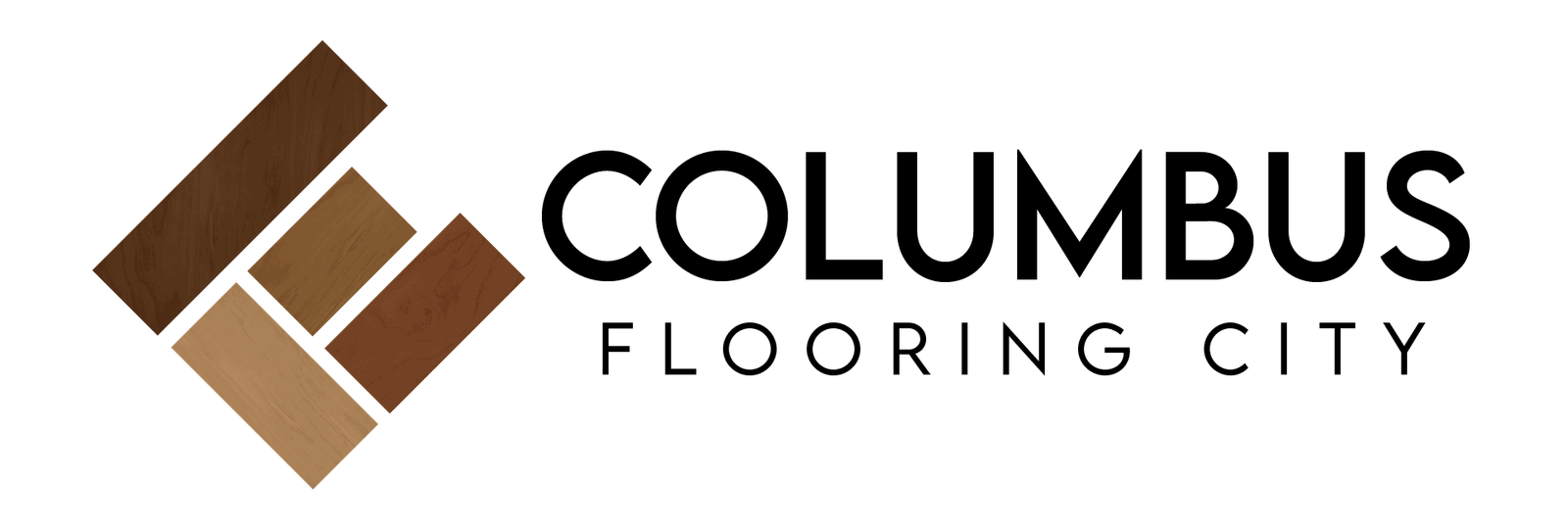Have you ever wondered, “What is laminate flooring?” Here, we go deeper into the world of this distinctive flooring option. Welcome to our expert guide on this unique flooring.
Laminate flooring has become prominent for homeowners and interior designers for its unparalleled versatility, aesthetic appeal, and budget-friendly nature.
This extensive guide attempts to give you a thorough grasp of this flooring, from its fundamental components to its installation procedures, while exposing the advantages and disadvantages of this unusual flooring choice.
What is Laminate Flooring?
Laminate flooring is a marvel of modern technology, ingeniously engineered to replicate the natural beauty of wood, stone, or tile. It combines durability and visual allure by combining multiple layers with a specific purpose.
At the top lies the wear layer, a resilient shield that safeguards the floor against scratches, stains, and fading, ensuring long-lasting resilience. Just beneath it, the image layer employs advanced high-definition photography to faithfully capture the intricate details of genuine wood grains or other materials.
Finally, the core layer, crafted from high-density fiberboard, reinforces the laminate flooring, ensuring stability and structural integrity. These layers are expertly fused through a meticulous lamination process, resulting in a visually stunning and highly durable flooring surface.
Unveiling the Basics of Laminate Floors:
It offers many benefits, making it an exceptional choice for modern homes. Laminate flooring installation cost is one of its most attractive features, often accompanied by a user-friendly click-lock system that enables a seamless setup experience.
Furthermore, laminate floors exhibit remarkable resistance to scratches, stains, and fading, making them an ideal solution for high-traffic areas in bustling households. Moreover, maintenance is a breeze, requiring nothing more than regular sweeping and occasional damp mopping to preserve the flawless appearance of laminate flooring.
Laminate Flooring Pros and Cons:
Laminate flooring offers benefits and drawbacks of its own, just like any other type of flooring. Understanding these pros and cons will help you decide when considering this flooring for your space.
Pros:
- Cost-Effectiveness: It combines affordability with style, providing a budget-friendly alternative to pricier options like hardwood or natural stone floors.
- Diverse Design Options: Thanks to cutting-edge printing technology, laminate floors offer an astonishing array of designs, flawlessly replicating the appearance of various wood species, stone patterns, and more.
- Unmatched Durability: With its wear layer acting as a protective shield, it withstands everyday wear and tear, ensuring its longevity even in the most active households.
- Environmentally Friendly: Many laminate flooring products incorporate recycled materials, making them an eco-conscious choice. Additionally, this flooring can be recycled, promoting sustainability in the industry.
- Easy Installation: Harnessing the power of click-lock systems, laminate flooring installation becomes hassle-free, allowing many homeowners to embark on DIY projects and save on labor costs.
Cons:
- Moisture Sensitivity: While laminate flooring boasts water resistance to a certain extent, excessive moisture exposure can lead to damage, making it unsuitable for bathrooms or areas prone to water spills.
- Limited Repair Options: Unlike hardwood floors, it cannot be sanded or refinished. Individual planks often require replacement when damaged, which can prove challenging if the specific design is no longer available.
- Noise and Echoes: It may produce a hollow sound and echoes when walked upon, particularly when not accompanied by proper underlayment.
- Finite Lifespan: Although highly durable, it may have a shorter lifespan than hardwood or tile floors, particularly in heavily trafficked areas.
- Incompatibility with Radiant Heating: It is not the most suitable option for homes with radiant heating systems, as it can inhibit heat transfer and potentially cause damage to the flooring.
Laminate Floor Materials:
This flooring is a popular choice for homeowners and commercial spaces alike, is constructed using three essential layers, each serving a distinct purpose to ensure its durability and aesthetic appeal:
-
Laminate Wear Layer:
Sitting atop this flooring, the wear layer is crucial in shielding the surface from everyday wear and tear. Composed of materials like aluminum oxide or melamine resin, this robust topmost layer offers exceptional protection against scratches, stains, and fading. With its remarkable durability, the wear layer ensures that your flooring retains its pristine appearance even in high-traffic areas, making it a resilient and long-lasting option.
-
Laminate Image Layer:
Just beneath the wear layer lies the image layer, which truly brings the beauty and charm of natural materials to life. Through advanced printing techniques, high-resolution images are carefully applied to this layer, meticulously replicating hardwood, stone, or tile’s authentic patterns, colors, and textures. The result is a wonderfully realistic flooring surface that gives a broad range of design possibilities to fit your taste and preferences and replicates the appearance of natural materials.
-
Laminate Base Layer (Core):
The foundation of laminate flooring lies within the base layer often called the core. High-density fiberboard (HDF) or medium-density fiberboard (MDF) are frequently used to build this layer. Engineered with strength and stability in mind, the core provides the necessary support and structure to this flooring.
It ensures that the planks or tiles maintain their shape and integrity, even when subjected to heavy foot traffic. Additionally, the core offers moisture resistance, guarding against the potential damage caused by spills or humidity.
By incorporating these three essential layers, laminate flooring is remarkably balanced between durability, visual appeal, and affordability. The wear layer safeguards the surface, the image layer replicates the natural beauty of various materials, and the base layer provides stability and moisture resistance. This composition ensures this flooring is an attractive option and a practical and long-lasting investment for your home or commercial space.
Laminate Installation Methods:
When installing laminate flooring, several methods are available, each with unique advantages and considerations. Let’s explore the different installation methods to help you choose the best suits your needs.
-
Click-Lock Installation:
The click-lock system is among the most popular and user-friendly installation methods for this flooring. The planks are designed with interlocking mechanisms that easily click together, eliminating the adhesive need. This makes installation a breeze, as the planks can be quickly and securely joined. Click-lock laminate is a floating floor system that rests on top of the subfloor without being directly attached. This method allows for easy removal and replacement of individual planks if necessary.
-
Glue-Down Installation:
The glue-down method is an excellent choice for a more permanent and secure installation, particularly in areas with high moisture levels. Using a strong adhesive, this approach glues the laminate planks directly to the subfloor. This provides enhanced stability and prevents the planks from shifting or moving over time. Glue-down installation requires careful attention to detail, as proper adhesive application and even distribution are crucial for a successful and long-lasting installation.
-
Loose-Lay Installation:
The loose-lay method is often used as a versatile and temporary flooring solution for laminate flooring. With this approach, the laminate planks are not affixed to the subfloor or each other. Instead, it is kept in place by the combined weight of the furniture put on it and the flooring itself.
Loose-lay laminate is easy to install and remove, making it suitable for portability or temporary flooring. However, it’s important to note that there is a slightly higher risk of the planks shifting or sliding over time without adhesion. Read our guide on how to remove laminate flooring if you want to remove it.
Remember to consider the specific requirements of your space and the manufacturer’s guidelines, and seek professional advice if needed to ensure a successful and long-lasting laminate floor installation.
Subfloor and Underlayment:
To ensure a successful installation and avoid common mistakes when laying laminate flooring, attention must be given to the subfloor and underlayment. The subfloor is the structural surface beneath the flooring and must be clean, dry, and level. Common subfloor types include concrete, plywood, and oriented strand board (OSB). It is crucial to address any moisture issues or unevenness in the subfloor before installing this flooring.
The underlayment, an additional layer between the subfloor and this flooring, provides several benefits. It acts as a cushioning layer, reducing noise and enhancing comfort underfoot. The underlayment also offers moisture resistance, protecting the laminate flooring from potential subfloor moisture. Depending on the installation’s demands and specifications, underlayment can be made from various materials, including foam, cork, and rubber.
Comparing Laminate Floors to Other Floor Coverings
When selecting the right flooring for your space, it’s essential to consider going through the various options. Let’s discover them and compare them with the laminate flooring below.
-
Laminate vs. Hardwood Flooring:
Laminate flooring continues gaining popularity as a cost-effective alternative to hardwood flooring without compromising aesthetics. While hardwood flooring boasts a timeless and luxurious appeal, it often comes with a hefty price tag. In contrast, with remarkable accuracy, It can mimic the look of various wood species, from oak to cherry.
Advanced printing technology allows for intricate details, including realistic wood grain patterns and textures, creating a visually stunning floor at a fraction of the cost. Furthermore, laminate flooring is a superior option for busy houses with kids and dogs since it is more durable and scratch resistant than hardwood.
Maintenance is a breeze, as laminate floors only require regular sweeping and occasional damp mopping, eliminating the need for refinishing or extensive upkeep associated with hardwood flooring.
-
Laminate vs. Vinyl Flooring:
Both options offer distinct advantages in the battle between laminate and vinyl flooring. Thanks to its exceptional water resistance, vinyl flooring stands out in moisture-prone areas, such as bathrooms and basements. Without warping or damage, it can withstand spills, moisture, and high humidity.
On the other hand, laminate flooring provides a more authentic and natural look, particularly when replicating the appearance of hardwood. The advancement in printing technology enables laminate to capture the intricate details of wood grains, knots, and even the texture, resulting in a flooring option that resembles the real thing.
Laminate floors are also more resistant to scratches and fading than vinyl, making them suitable for high-traffic areas and homes with active families.
Read our guide on the difference between vinyl and laminate flooring to explore their details and distinctions.
-
Laminate vs. Tile Flooring:
Tile flooring has long been favored for its durability and water resistance, making it an ideal option for kitchens, bathrooms, and other areas exposed to moisture. However, laminate flooring offers several advantages over tile. Laminate provides a warmer and more comfortable surface to walk on, as it does not retain the cold temperature of the tile.
Additionally, it provides a softer sensation underfoot, making it more accommodating and pleasant for prolonged standing. Moreover, without grout lines, laminate can convincingly replicate various tile patterns and textures, including ceramic, porcelain, and natural stone. This results in a seamless and visually appealing flooring surface that is easier to clean and maintain than traditional tile floors.
-
Laminate vs. Carpet:
Laminate flooring has emerged as a popular alternative to carpet, offering numerous benefits for homeowners. Laminate floors are easier to clean and maintain compared to carpets, as they do not trap dust, dirt, or allergens. Spills and stains are also less of a concern with laminate, as it can be quickly wiped clean. Laminate flooring is a practical choice for households with pets, as it is more resistant to scratches and pet accidents than carpet.
Additionally, laminate flooring provides better longevity and durability, as it does not wear down or flatten over time like carpet does. However, it’s worth noting that carpet offers a softer and more cushioned feel underfoot, providing enhanced comfort and sound insulation, which can be desirable in bedrooms or cozy living areas.
-
Laminate vs. Engineered Wood Flooring:
Engineered wood and laminate flooring share similar layered construction but differ in materials and cost. Engineered wood flooring features a real wood veneer as the topmost layer, providing natural wood’s authentic beauty and warmth. However, it tends to be more expensive than laminate flooring.
On the other hand, laminate offers a cost-effective alternative to achieve a wood-like appearance. With its wear layer, laminate flooring provides superior scratch resistance and durability compared to engineered wood. Laminate is also easier to install, thanks to its click-lock system, making it a popular choice for DIY projects.
Furthermore, laminate flooring requires minimal maintenance, while engineered wood flooring may need occasional refinishing to restore its original luster. Ultimately, deciding between laminate and engineered wood flooring depends on budget considerations, desired aesthetics, and maintenance preferences.
Overall, laminate flooring proves to be a versatile and practical option compared to other popular choices. Laminate flooring cost, its ability to replicate the look of hardwood, tile, or stone, its durability, and easy maintenance make it a favored choice among homeowners. Whether you want to revitalize your living space, create a stylish kitchen, or upgrade a high-traffic area, laminate flooring offers many design possibilities to suit your taste and lifestyle. Embrace the beauty and functionality of laminate flooring and enjoy the benefits of a stunning and resilient floor that will stand the test of time.
Conclusion:
Laminate flooring is a unique option that effortlessly combines style, durability, and affordability. Whether you’re looking to revamp your living room with the timeless beauty of hardwood or create a sleek and modern kitchen with the durability of tile, laminate flooring offers a cost-effective and visually stunning alternative.
We hope that you got your answer to the question of what is laminate flooring from this ultimate guide which includes all the details you may require. With laminate flooring, you can unlock the beauty and versatility of your floors, creating a space that reflects your unique style and exceeds your expectations.
Frequently Asked Questions:
What is the downside to laminate flooring?
One downside of laminate flooring is its sensitivity to moisture, making it unsuitable for areas prone to water spills or high humidity. Additionally, laminate flooring cannot be refinished or repaired like hardwood, often requiring replacement. The sound produced when walking on laminate can be hollow, lacking the warmth and authenticity of natural materials.
What distinguishes vinyl flooring from laminate?
Laminate flooring consists of multiple layers, including a fiberboard core and a photographic image layer that mimics the look of wood or other materials. Vinyl flooring, on the other hand, is made of PVC and comes in sheets or tiles. Laminate provides a more realistic appearance and texture, while vinyl offers superior moisture resistance and resilience.
Which is better, vinyl or laminate?
The choice between vinyl and laminate flooring depends on factors like moisture resistance, scratch resistance, underfoot feel, and desired aesthetics. Vinyl is highly water-resistant, making it suitable for wet areas, while laminate has better scratch resistance. Vinyl offers a softer and warmer underfoot feel, while laminate provides a more authentic look and texture.
Can you mop the laminate flooring?
While laminate flooring is relatively water-resistant, excessive moisture can cause damage. To clean laminate floors, use a damp or microfiber mop with a mild cleaning solution specifically designed for laminate. Avoid excess water, abrasive cleaners, wax-based products, or steam mops, as they can damage the laminate’s protective wear layer. Regular sweeping or vacuuming with a soft-bristle attachment removes dust and debris.


